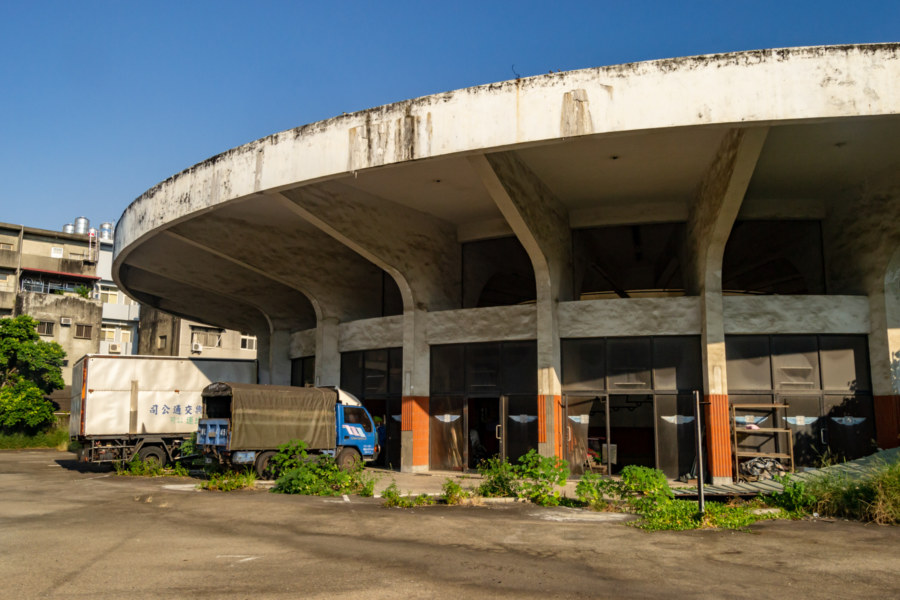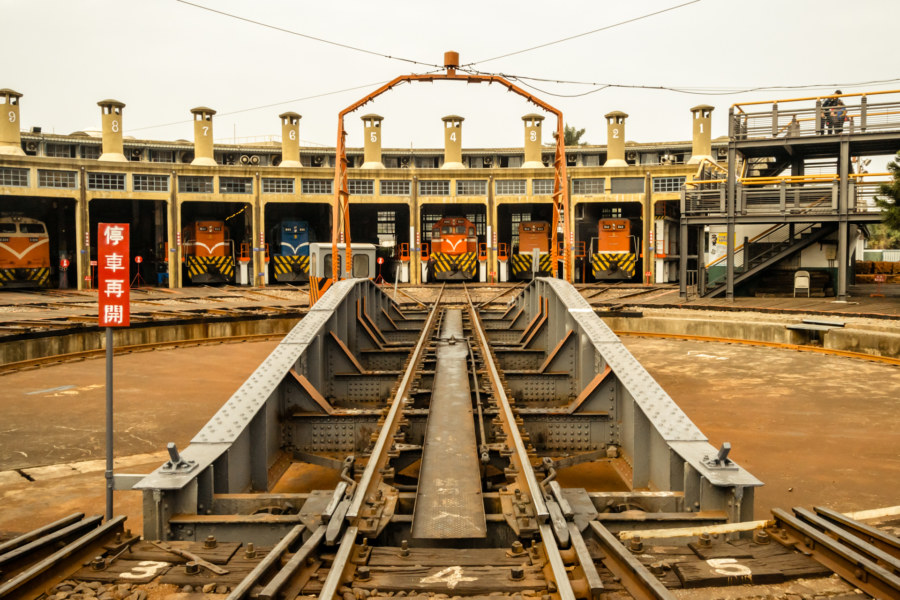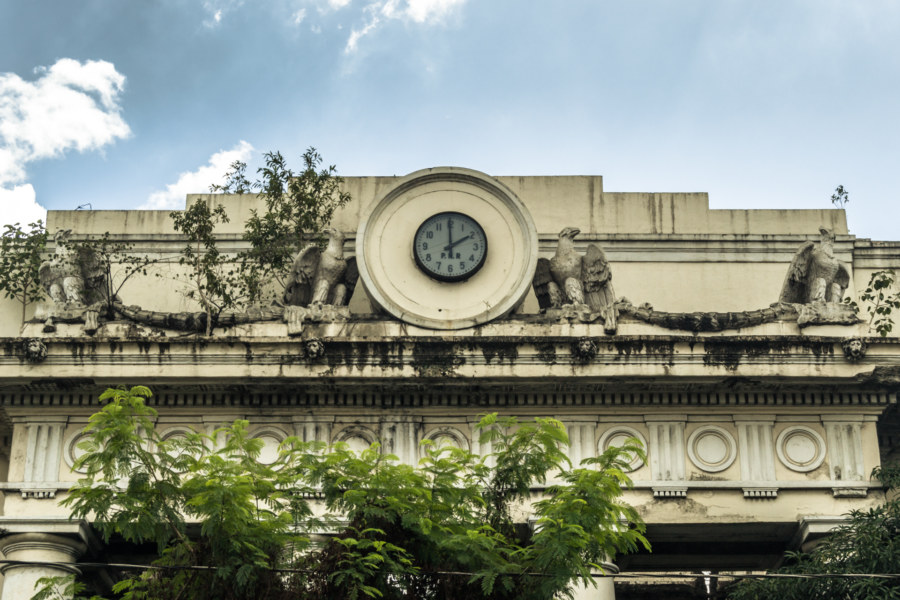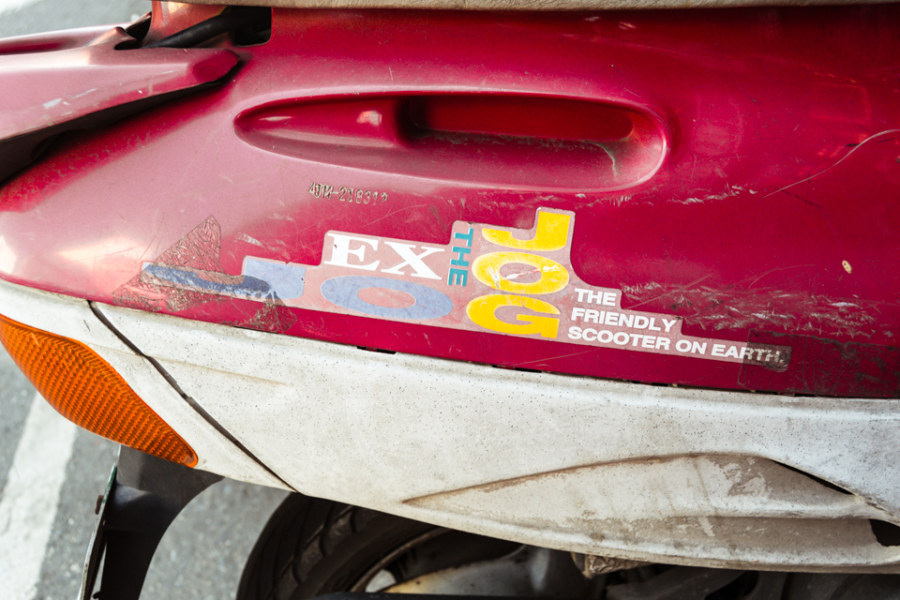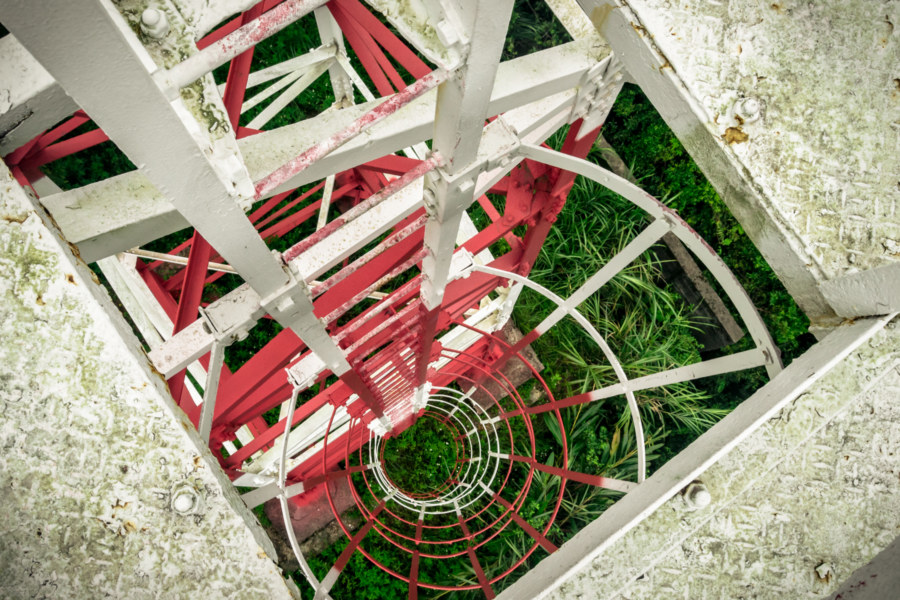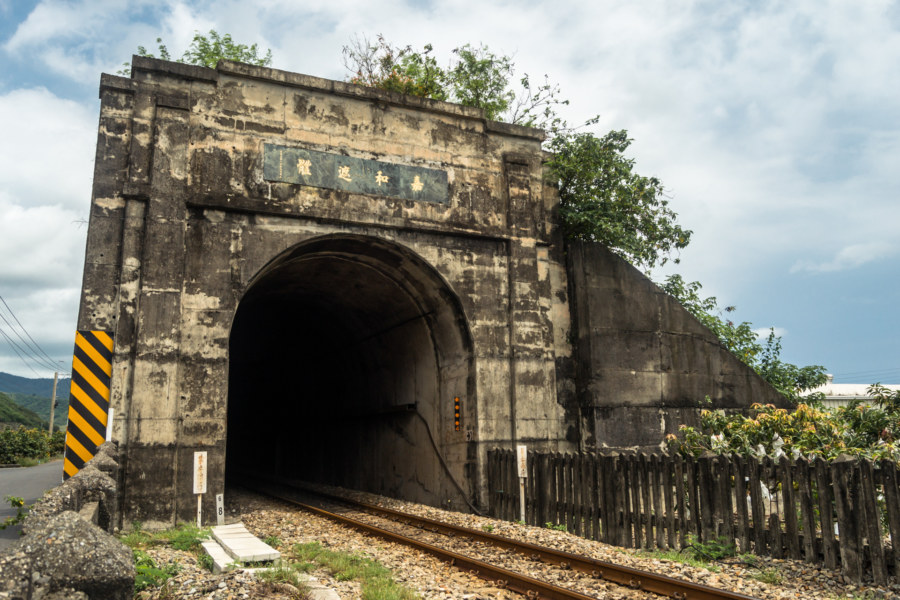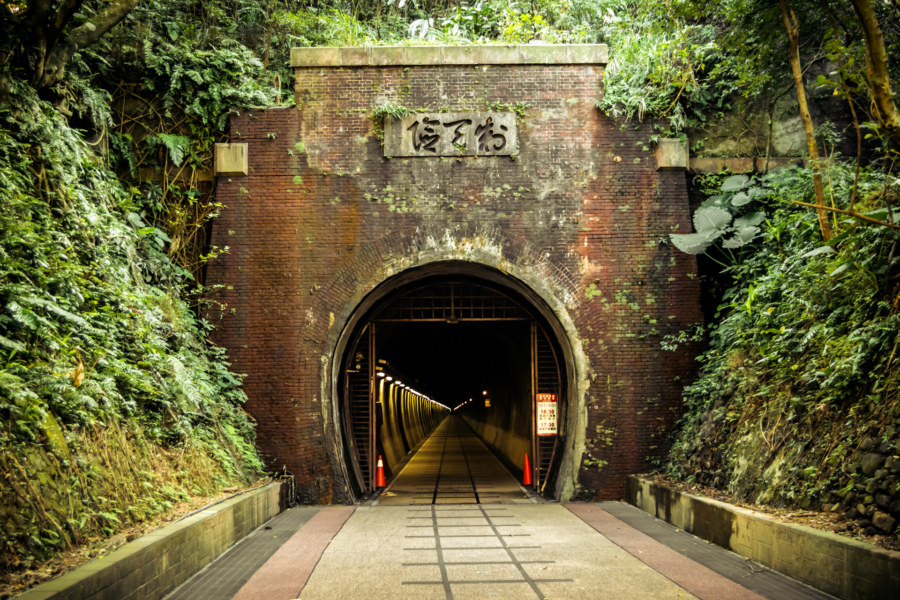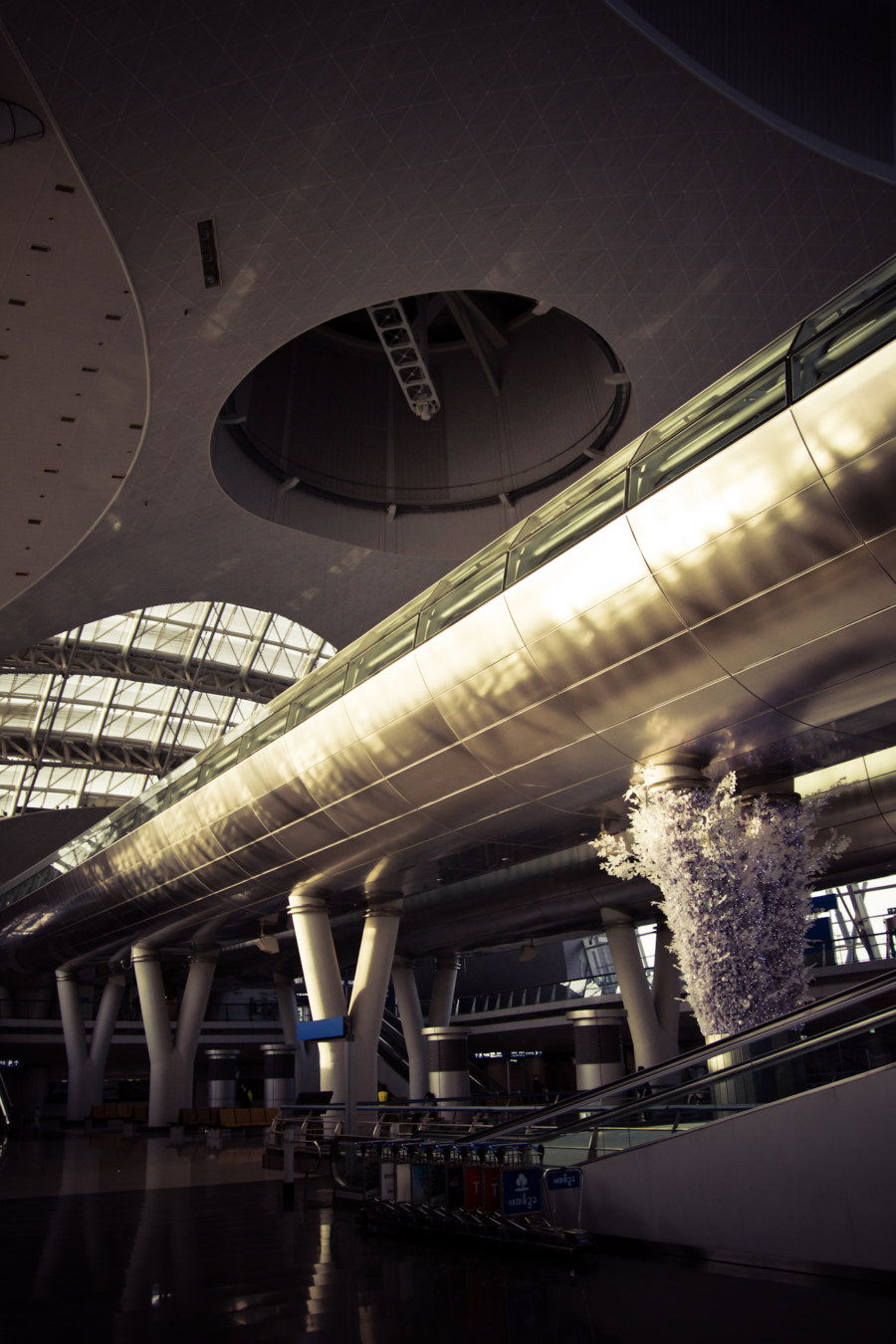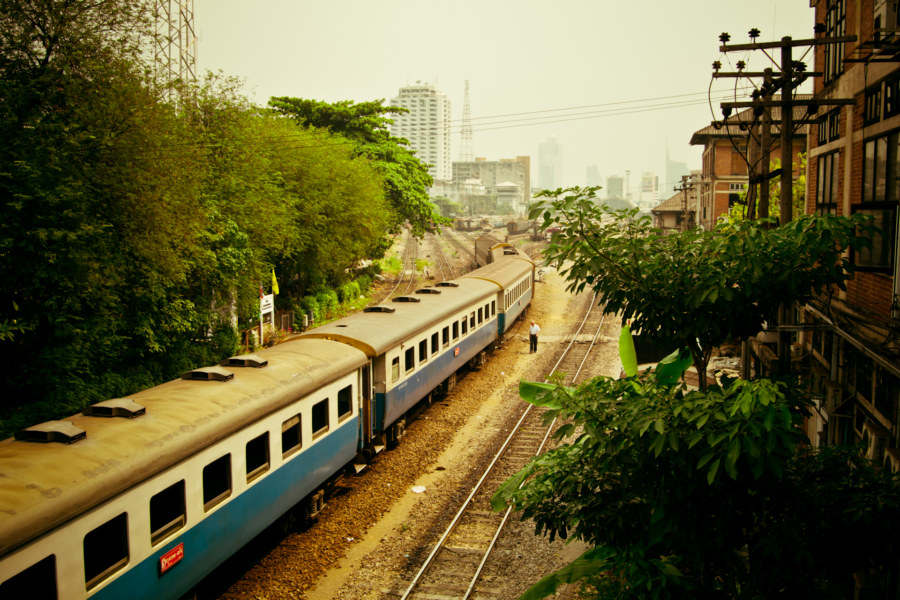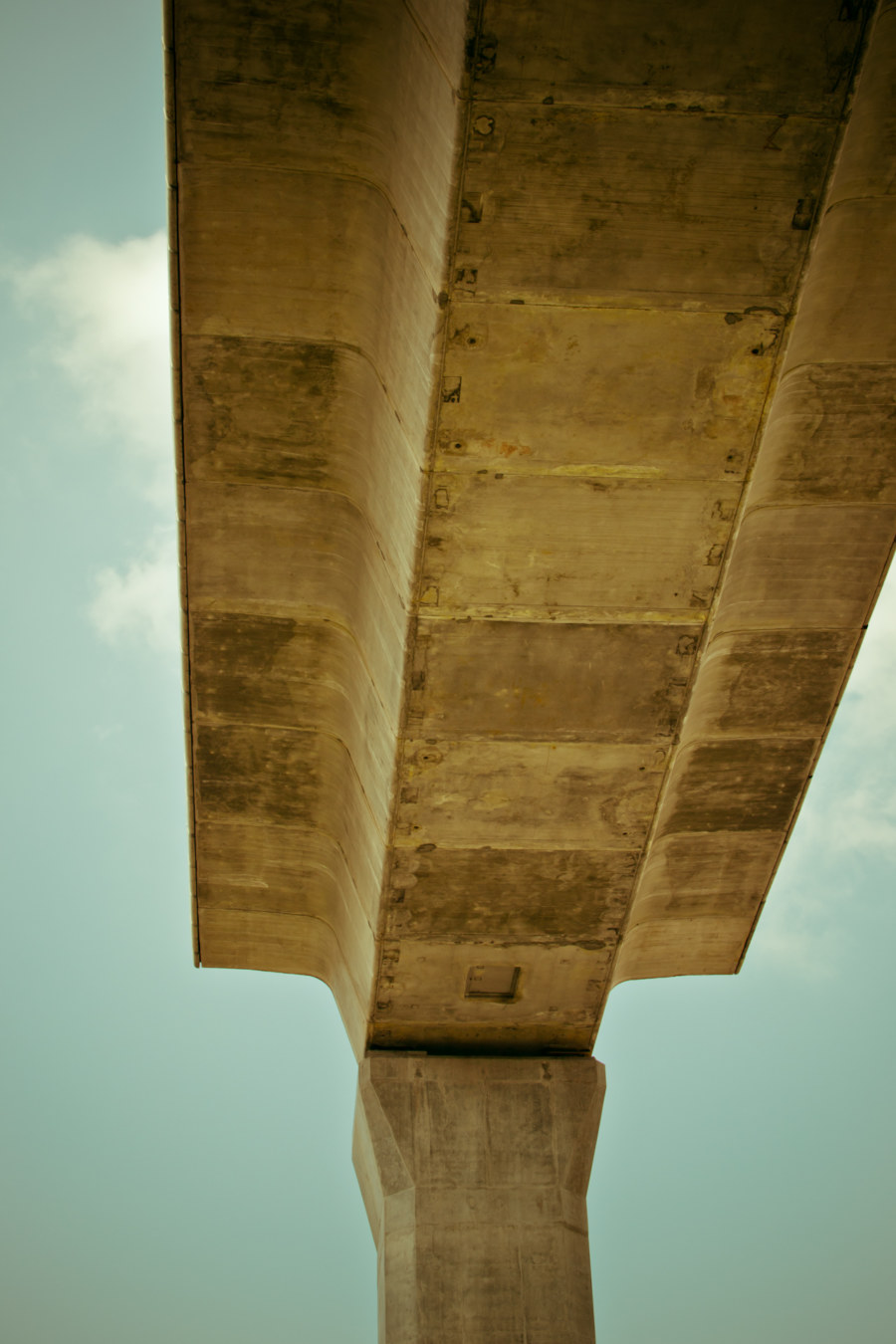Taiwan Motor Transport Company 台灣汽車客運公司 (or simply Táiqì 台汽) was a state-owned enterprise founded in 1980, partly to take advantage of the newly-completed National Freeway 1 國道一號 running along the western coast of Taiwan from Keelung to Kaohsiung. Considerable investments were made into an extensive fleet of vehicles, more than two dozen bus stations, and a massive maintenance depot (previously documented on this blog). Despite enjoying a monopoly on long distance, intercity coach travel, the company struggled to remain profitable in its first decade of operations—and when the market was deregulated and opened to competition in the early 1990s, its fate was sealed. After incurring another decade of losses Taiqi was privatized in 2001 under the name Kuo-Kuang Motor Transport Company 國光汽車客運股份有限公司, which continues to operate today, albeit on a much smaller scale. One consequence of the downsizing that preceded privatization was the closure of the Changhua Bus Terminal in Changhua City, the administrative capital of Changhua. Today it remains derelict, a crumbling relic of the optimistic 1980s hidden in the laneways north of the central railway station.
Trains, trams, automobiles, scooters: anything motorized and on the surface.
Adjacent Terms
Changhua Roundhouse 彰化扇形車庫
One of the most extraordinary attractions in Taiwan is the historic Changhua Roundhouse 彰化扇形車庫, originally built in 1922 during Japanese colonial rule and still in operation today. Although information is hard to come by it seems that it might be the only roundhouse still operating in Asia—and certainly one of the oldest still in regular use anywhere in the world. Every other roundhouse I researched for this article has been abandoned, demolished, repurposed, or converted into a museum—and those rare few that are still operational have been mighty hard to date. As such, the Changhua Roundhouse is a dream to visit for a railway enthusiast like myself, particularly since the ambiance hasn’t been ruined by the sort of tacky treatment you’ll often find at Taiwanese tourist attractions. After signing in with the guard at the gate I had free run of the place—and as you can see from some of the following photos, nobody minded me getting shockingly close to moving trains as the mechanics went about their daily routines.
Paco Railway Station
Paco Railway Station was built in Paco, Manila, in 1915 during the American colonial period. Designed by William E. Parsons, an American architect mainly known for his work in the Philippines, it remained in service until the mid-1990s when it was partly demolished by a developer intent on building a mall next door. The ruins of that project, never completed, can still be found next to the old station, spreading decay like a cancer through this part of the city.
Taiwanese Scooter Stickers 1
Taiwan is absolutely mad for scooters, a consequence of high population density, tightly cramped streets, and the expense and inconvenience of driving a car. Everywhere you go you’ll find streets lined with parked scooters and filled with scooterists going about their business. In can all seem like absolute chaos to outsiders—but there is a method to the madness, and the convenience factor regularly seduces skeptics, particularly when living outside of Taipei or beyond the reach of public transportation.
Asia Cement Aerial Tramway 亞泥空中纜車
Yesterday I went out with a friend to explore several abandoned and neglected sites in Hsinchu, Taiwan. Our first stop was one of many mothballed cable car 空中纜車 towers in Guanxi connecting a stone quarry near Yùshān Village 玉山里 (formerly known as Chìkēshān 赤柯山) with a cement plant next to Jiǔzàntóu Station 九讚頭車站 in Hengshan. There seems to be no general agreement about the formal name for the system so I’m picking one of many options and dubbing this the Asia Cement Aerial Tramway 亞泥空中纜車 for the sake of simplicity.
Jiahe Railway Tunnel 嘉和遮體
Here is yet another roadside curiosity in the deep south of Taiwan: a false tunnel on the coastal plains of Fangshan, Pingtung. It doesn’t cut through any mountainside nor is it built to withstand landslides. It’s just an 1,180 meter tunnel that trains pass through for no discernible reason. I first read about this on Michael Turton’s blog and later saw it on my first round-the-island bicycle tour. More recently I took a spin around the southern loop once more, and spent a little extra time examining this concrete oddity in an attempt to divine its purpose.
Old Caoling Tunnel 舊草嶺隧道
Old Caoling Tunnel 舊草嶺隧道 was built in the 1920s to connect northern Taiwan with the eastern coast by rail. A new tunnel was built in the 1980s and the old tunnel was closed until 2008 when it reopened as a tourist-friendly bikeway. The main point of entry is Fúlóng 福隆, a beach town in New Taipei City about an hour outside of Taipei by train. Riding through the old tunnel makes for a great day trip from Taipei—as long as you don’t go on a weekend.
First Impressions of Seoul
Seoul is a fantastic change of scenery after the many challenges of Thailand. My experience here in South Korea has been fantastic from the very moment I stepped off the plane. The airport is extremely well-organized and connected to downtown Seoul by rail. I spent all of $3 to get downtown and transferred to the appropriate subway line to reach my hostel without mishap.
Visions of Bangkok 2
More photos from in and around Bangkok, this time focusing on transportation and commerce.
